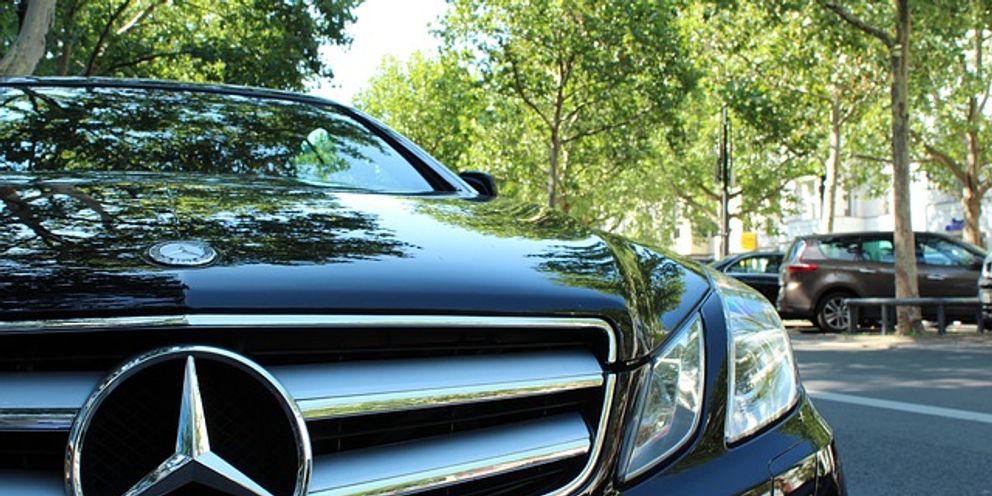
The History of Mercedes-Benz
Written By: John Linden
Mercedes-Benz, a German multi-national division of Daimler AG, is known for its luxurious prestige, quality and performance. If you own one and are looking for Mercedes Benz car covers, we carry a full line. The company’s headquarters is located in Stuttgart, Baden-Württemberg, Germany, manufacturing luxury vehicles, trucks, buses and coaches. Its origins are traced back to January 29, 1886, when Karl Benz submitted a patented to the Imperial Patent Office for the Mortorwagen – regarded as the first automobile to be gasoline powered. The Mercedes-Benz automobile was born. Mercedes-Benz’s infamous slogan, “The Best or Nothing”, and their brand is one of the most recognized in the world.
1844 – Karl Benz, the son of an engine driver, was born on November 25, 1844, in Karlsruhe, Germany.
1871 – Karl Benz establishes his first firm with August Ritter in Mannheim, Germany.
1883 – Karl Benz, along with two new partners, forms Benz & Co., Rheinische Gasmotorenfabrik in Mannheim, Germany.
1886 – Karl Benz submits and receives a patented from the Imperial Patent Office for the Mortorwagen – regarded as the first automobile to be gasoline powered.
1886 – July 3, 1886, Karl Benz introduces the first automobile.
1901 – The Honeycomb radiator – closed cooling system – is the first featured in a Mercedes, having a texture design making it highly efficient.
1903 – Karl Benz retires from the company.
1904 – Karl Benz joins the Benz & Cie supervisory board.
1906 – Electric-powered vehicles become available – passenger cars, buses, trucks and fire services vehicles – with electric propulsion.
1910 – Multivalve engine improves both fuel consumption and performance with the first Benz Special Tour Car to employ four valves per cylinder.
1921 – Mercedes increases power of several cars with a supercharged engine – achieved by pressurizing the fuel-air mixture.
1926 – Karl Benz joins the Daimler AG supervisory board and the company Daimler-Benz is formed.
1929 – Karl Benz dies.
1931 – Mercedes 170 features the first 4-wheel independent suspension allowing each wheel to respond independently. A new hydraulic braking system sets new safety benchmarks and higher performance for the Mercedes 170.
1936 – The 260D is the first diesel passenger automobile, using 30% less fuel than the gasoline counterparts.
1939 – Research begins for passenger-car safety development. The test vehicle has a highly rigid floor, collapsible steering column and side-impact protection.
1949 – First of its kind, and strictly designed to prevent doors opening during an accident, the conical-pin door lock is patented.
1951 – Bela Barenyi’s research results in the crumple zone – series production: 1959 – patent for the first safety automobile bodies having defined reformation zones and a rigid passenger cell, a universally used concept of present day.
1958 – Rigorous crash testing is performed on every newly developed Mercedes.
1963 – Mercedes offers its first SL with an automatic transmission. Having no pushbutton release, the all four forward gears is still the current industry standard.
1967 – A separate high performance division is created – Mercedes-AMG – manufacturing the 300SEL 6.3 V8 Saloon known as the “Red Sow”.
1973 – Offset frontal crash testing simulates a more realistic concentration of those in real-world collisions.
1978 – Mercedes implements antilock braking systems – ABS.
1982 – The compact 190-Class debuts a breakthrough 5-arm rear multilink suspension.
1985 – 4MATIC all-wheel drive is debuted on the Mercedes AWD E-Class.
1991 – Mercedes removes environmentally harmful CFC chemicals from all vehicles’ air conditioning systems making them eco-friendly.
1992 – Mercedes get more rapid and precise control with a Controller Area Network – CAN – electronic breakthrough.
1995 – ESP® – Electronic Stability Program – helps maintain control in evasive maneuvers and corners. ESP® is now required on all cars by law.
1997 – New Mercedes-Benz car owners get the convenience of the SmartKey and antitheft prevention all in one. An electronic code is used to unlock and start the engine.
2000 – Tele Aid is introduced – later becoming enhanced under mbrace® – providing enhanced security, navigation connects drivers to Mercedes-Benz customer assistance via a computer, smartphone or from three buttons inside the car cabin.
2002 – PRE-SAFE® – an industry groundbreaking safety system – helps to prepare the car driver and passengers for an accident.
2006 – DISTRONIC PLUS with PRE-SAFE Brake looks ahead for stopped traffic, alerts the driver and starts the braking process to slow the vehicle even when cruise control is not engaged.
2010 – Mercedes-Benz equips cars with ATTENTION ASSIST, a driver monitoring system that sense change in driver actions – detects driver drowsiness from lack of dashboard interactions and steering behavior.
Mercedes-Benz of Today
- First used in Mercedes-Benz racing machines, all Benz vehicles are equipped with a fully independent swing axle suspension system.
- Every engine they produce is tested before mounting it into a car and engine oil used in tests is recycled close to 60 times flushing debris and dirt.
- All new Mercedes-Benz’s steering systems have their own shock-absorber providing additional smoothness and safety during driving.
Through history, Mercedes-Benz has impressed the automotive industry with technology and new innovations. They have been a leader in the automobile industry for over one-hundred years and continue to set the standard. For such recognizable brand order online mercedes cover which will give protection, high quality and durability for your car .
Updated